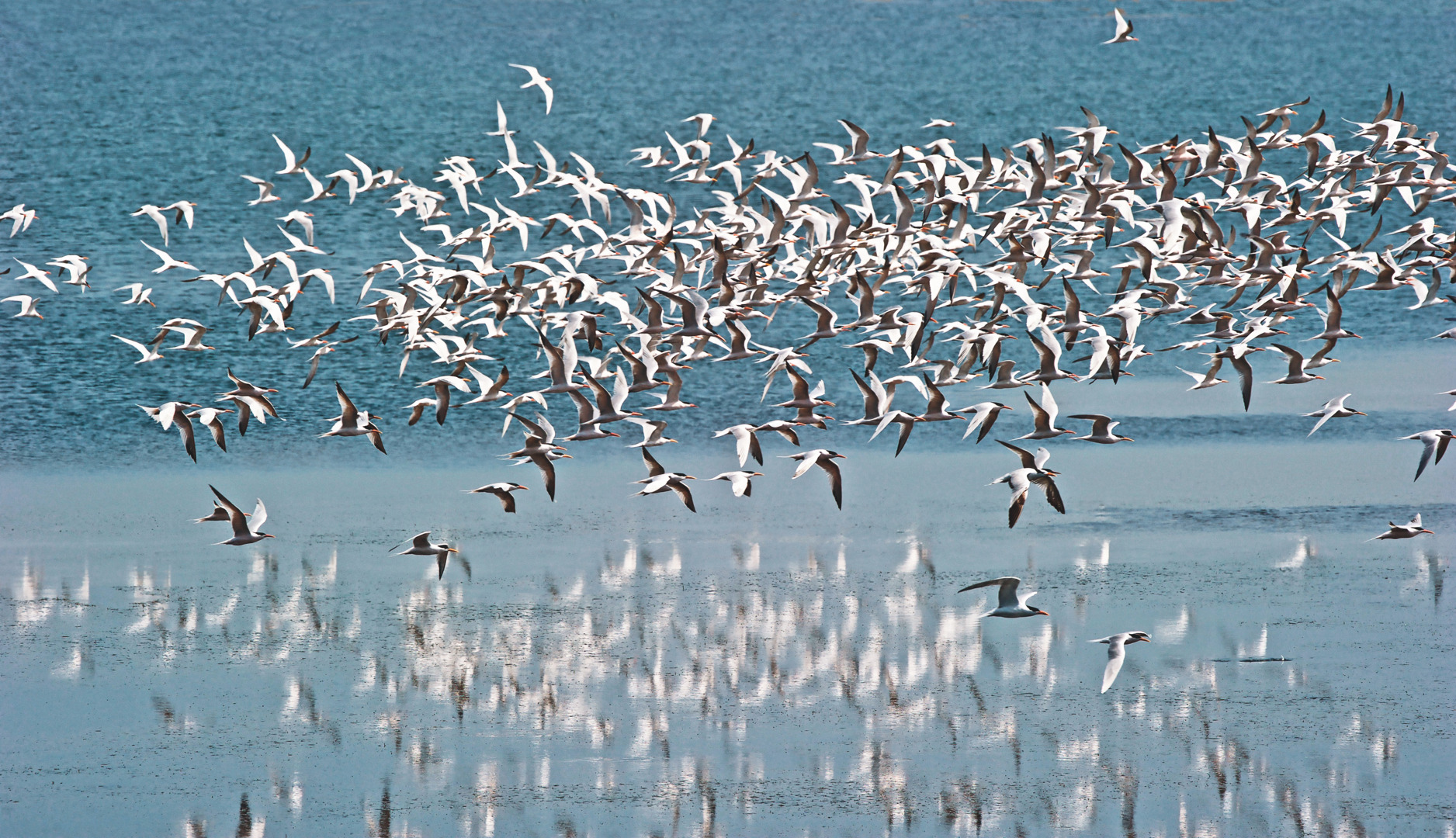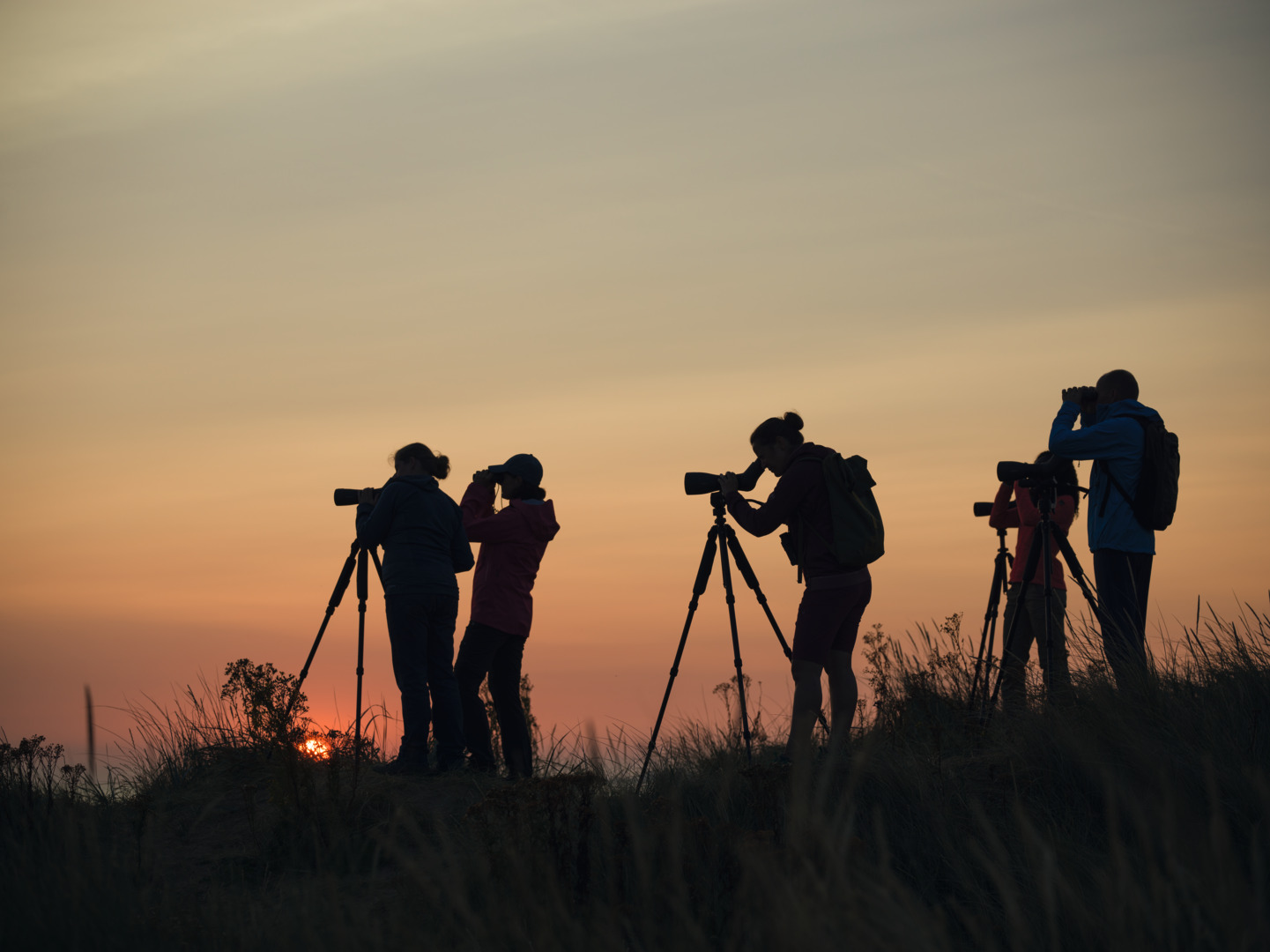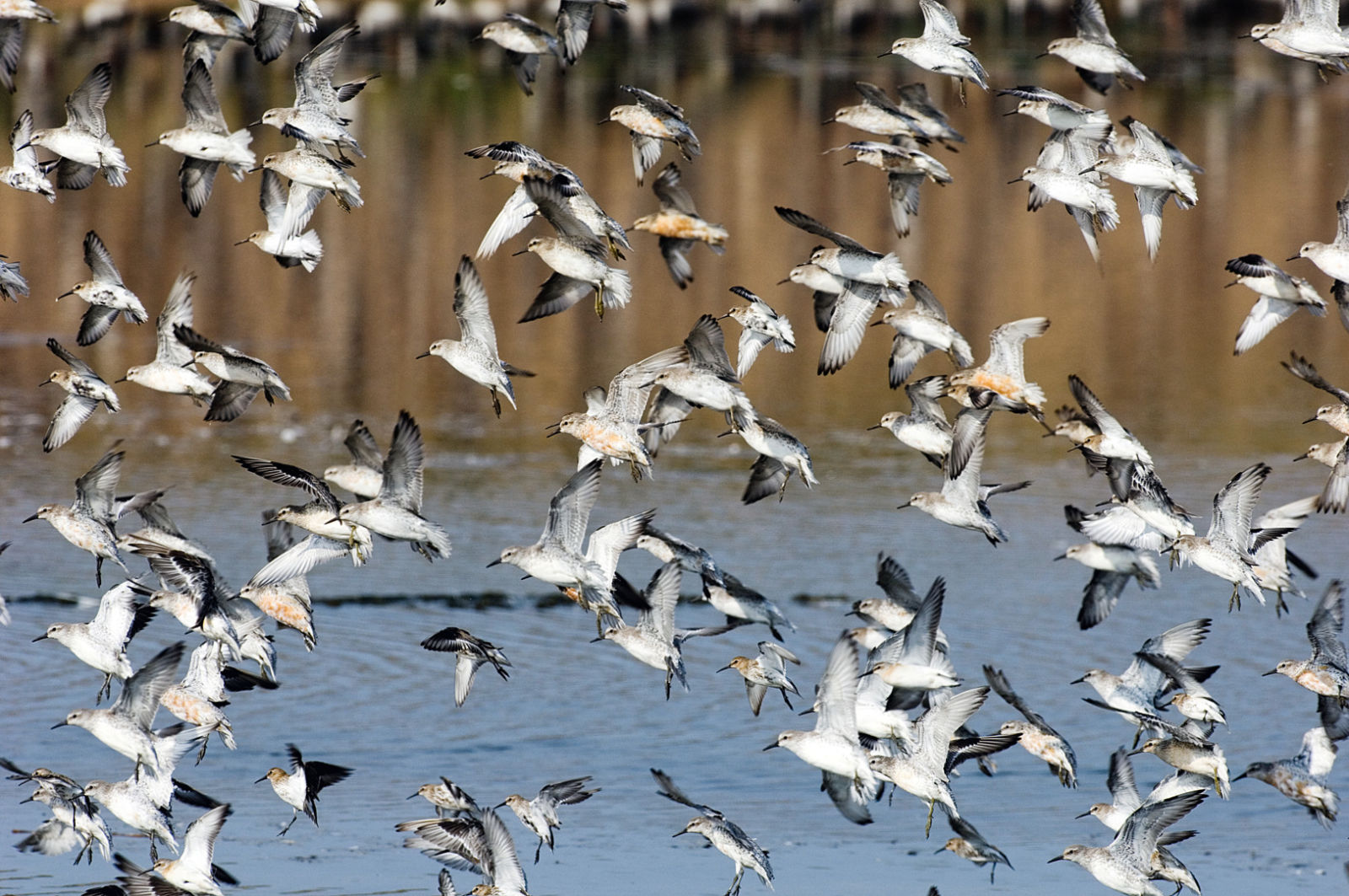

IT’S A RISK THAT NEARLY ONE IN FIVE BIRD SPECIES WORLDWIDE FEELS IT HAS TO TAKE TO SURVIVE.
Bird migration varies vastly in its scale, from short altitudinal journeys down a mountain range to escape the harshness of winter, to the epic voyages of the Arctic Tern (Sterna paradisaea), which travels from pole to pole – and back again – every year. Birds of all shapes and sizes migrate – from tiny hummingbirds weighing less than an ounce, to hefty geese and bustards. But big or small, long or short, all migrations share one factor in common – danger.
Migration is one of the most dangerous things a bird can do. While undertaking these marathon journeys, birds can lose nearly half their body weight as they propel themselves toward their destination. A destination that millions of them will never reach, succumbing to exhaustion, starvation, or predation as the grueling demands take their toll. And just half a year later, the survivors will once again prepare to do the journey in reverse – this time with their freshly fledged chicks in tow.
AMAZING MIGRATION EXPERIENCES
WANT TO EXPERIENCE THIS INCREDIBLE NATURAL PHENOMENON YOURSELF? HERE ARE THE PLACES TO GO…

PANAMA CITY, PANAMA
“Bottleneck sites” occur when huge numbers of migrating birds, especially large, eye-catching groups like raptors, storks, or pelicans, pass through a relatively small area, creating a birding spectacle. The jutting promontory of Panama City funnels thousands, sometimes millions of raptors over its urban skyline.

DOYANG RESERVOIR, NAGALAND
Every October, more than a million Amur Falcons (Falco amurensis) gather in northeast India on their fall migration from Siberia to their wintering grounds in Africa. Previously hunted and trapped in their thousands, local people now celebrate the bird, and not a single Amur Falcon has been reported trapped since 2013.

THE WASH, EAST ANGLIA
This huge estuary was formed where four rivers converge on the east coast of England. Every fall, tens of thousands of waders gather to roost on its mudflats. When the tide rises, vast flocks take to the air en masse, creating mesmerizing aerial formations.
But it’s a risk that nearly one in five bird species worldwide feels it has to take to survive, embarking on journeys that span deserts and seas, timed like clockwork to coincide with flowers budding and insects emerging from their pupae. For thousands of years this has continued, with birds traveling up and down the globe as food availability dictates. But in modern times, additional manmade pressures are proving an obstacle too far for many species. Worldwide, 40% of migratory birds are now in decline, and in the Americas, some long-distance migrants, such as Bachman’s Warbler (Vermivora bachmanii) and the Eskimo Curlew (Numenius borealis) are now presumed extinct, with new threats such as illegal bird-hunting dealing the final blow to already stretched migratory bird populations as they pass through countries bordering the Mediterranean.
“Migratory birds face numerous threats throughout their annual cycles from both natural and human-caused sources,” says Itala Yepez, Head of Conservation for BirdLife International in the Americas. Chief among these, Yepez says, is habitat loss. “Millions of acres of bird habitat are lost every year due to development, agriculture, and forestry practices. These rapidly accelerating impacts can be mitigated only through habitat restoration and protection.”


Unlike a sedentary bird species, where conservationists can pinpoint a specific site on which to concentrate conservation efforts, migratory birds are higher maintenance, requiring protection across their entire route – not just at both their breeding and wintering areas, but at crucial “stopover” sites that they visit along the way to rest and refuel. Just one broken link in the chain could be fatal.
Thus, it is vital that we do everything we can to increase our understanding of bird migration – and in this, researchers are being helped by new technologies. “Motus” (meaning “movement” in Latin) is a pioneering program led by Bird Studies Canada (one of the country’s two BirdLife Partners). It uses miniaturized radio transmitters weighing less than 0.3g/0.01 oz, which can be unobtrusively fitted onto the backs of birds, including small songbirds. These transmitters emit a short pulse every 5–30 seconds, each with a unique numerical pattern. These are then picked up by automated very high frequency (VHF) receivers, which automatically detect and record signals from the tags at distances of up to 15 km/9.3 miles.
“Already the technology is providing a striking level of insight into migratory movements. In one study, a Gray-cheeked Thrush (Catharus minimus) traveled over 3,200 km (nearly 2,000 miles) from Colombia to Indiana in just 3.3 days – flying an average of 986 km (612 miles) a day.”
CLIMATE CHANGE IS A GLOBAL THREAT THAT WILL LIKELY IMPACT TO SOME DEGREE ALL OF THE WORLD'S MIGRATORY BIRDS.


With the planet’s human population continuing to grow, the habitat and resource pressures that our migratory birds face are unlikely to subside. Neither are the various threats caused by an ever-changing climate – threats that will also increasingly impact people.
To date only two migratory species have ever been declared officially extinct – the North American Labrador Duck (Camptorhynchus labradorius), and the Passenger Pigeon (Ectopistes migratorius). The Passenger Pigeon was probably the most abundant bird species ever to have existed, numbering billions at the beginning of the 19th century. Yet those vast numbers were not enough to save it as they were shot out of the sky in great numbers and their forest habitat felled. On the afternoon of September 1, 1914, Martha, the last of her kind, died in a cage in Cincinnati Zoo.
These examples show how important it is to do all we can to prevent such future losses. Which is why the insights into migration research that Motus is providing, are so important. Because how empty would our lives feel without the return overhead of the swallows that miraculously – in a burst of joyous scratchy song, a flash of feathers – herald the onset of each new spring?












